| Fast Load Version | S P E C I A L  T R A V E
L R E P O R T T R A V E
L R E P O R T |
|
Olympus E-1 Gallery Page 1 of 4 Page 2 Page 3 Page 4 Olympus is famous for its 35mm film cameras but never quite made it into the ranks of 35mm automated SLRs. Their point and shoot models won a huge audience, and their digital compact cameras are among the best in the world, but until now, they have not competed with Canon and Nikon for the dSLR market that feeds professional photographers. To establish a place in the hearts and prints of professionals, Olympus boldly embraced--and largely developed--a new format that was not a conversion from a 35mm film history. That format is the Four Thirds system. A new set of specifications for image chip size, lens mount bayonet and internal systems all culminating in an optimized dSLR form that lets each element perform at maximum capability and opportunity to evolve.
As you handle the E-1 for the first time, everything about it feels completely right. It's solid, ergonomic and quick to learn. Every control you will wish to access is immediately touchable and prosumer features like Scene modes and Special Effects are absent. Exposure modes are marked P, S, A and M without resorting to clever re-interpretations of these commonly understood functions (such as Canon's, P, Tv [Time Value], Av [Aperture Value] and M markings they offer to establish an exclusive nomenclature at the expense of clarity) and each of the Olympus settings can not be accidentally twirled to a different position because they lock in place with a safety catch. Battery and CF-card doors latch closed, too, so you will never accidentally open one. The Forbidden City has some forbidding pavement. Kids see this as an opportunity to engage in some otherwise forbidden footwork.
In extra dim light, ISO 3200 and f/2.8 climb right into a container of magic medicinal tea clusters in a tea tasting shop. It's no secret among professionals that a 3:4 aspect master image is going to likely be less cropped for display in its final destination. A recent survey of the May 2004 National Geographic Magazine saw 68 images 3:2 in aspect or wider and 128 closer to 3:4 or squarer including display ads and editorial images. That said, I find that I crop squarer and wider nearly equally as I pare down images into their essential story-telling frames. If anything, statistically more of my E-1 images felt correctly framed in the camera. Two lenses traveled to China with the E-1. Most often the 14-50mm f/2.8-3.5 Zuiko 3.6:1 zoom with its 28-100mm (equivalent) range got the shot. Extending that range, the 50-200mm f/2.8-3.5 Zuiko came into play especially when shooting candids. Here are some of the results;
   Shanghai adults react differently to fountains than children do. No question as to who enjoys them more.  Collect them all! No visit to Beijing is complete without these stamps. 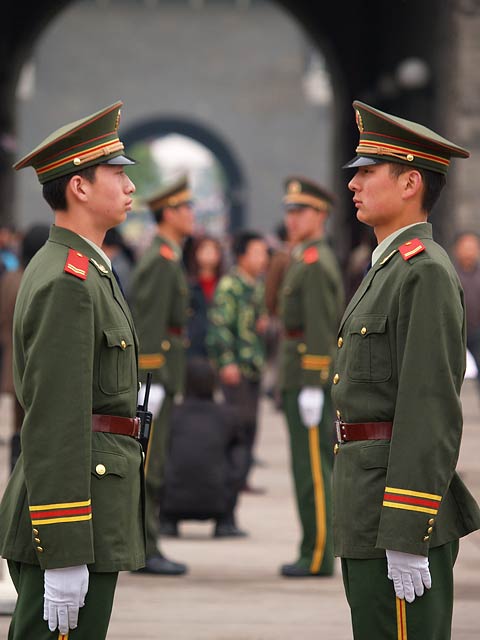 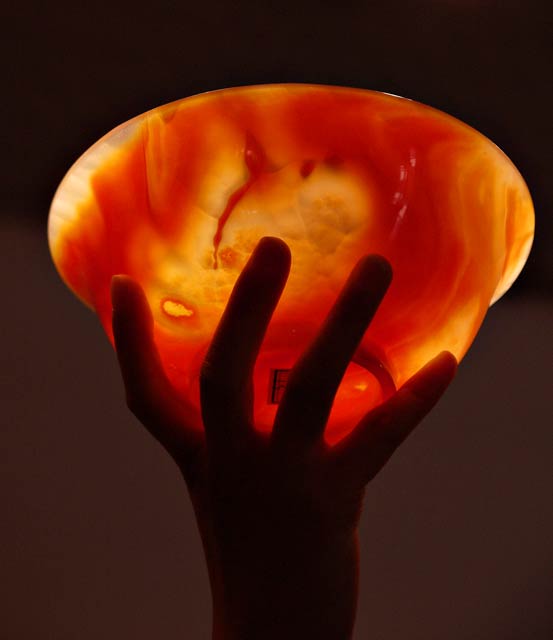  Tricks of the light. 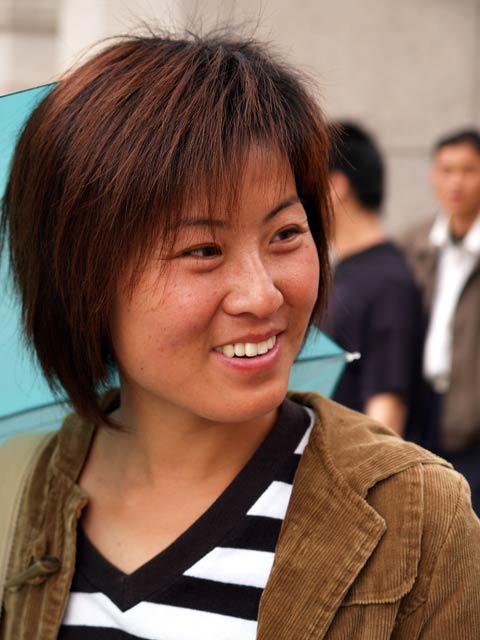    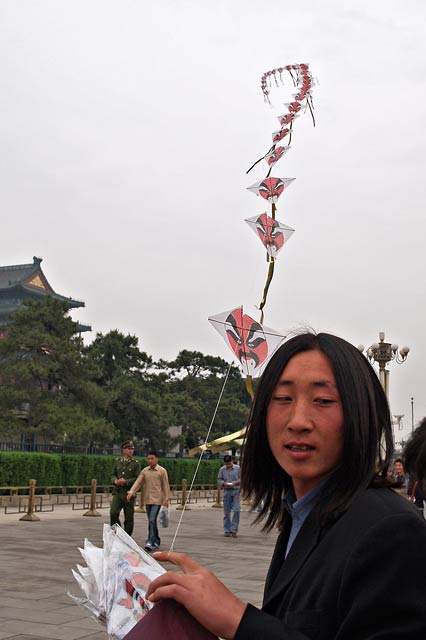 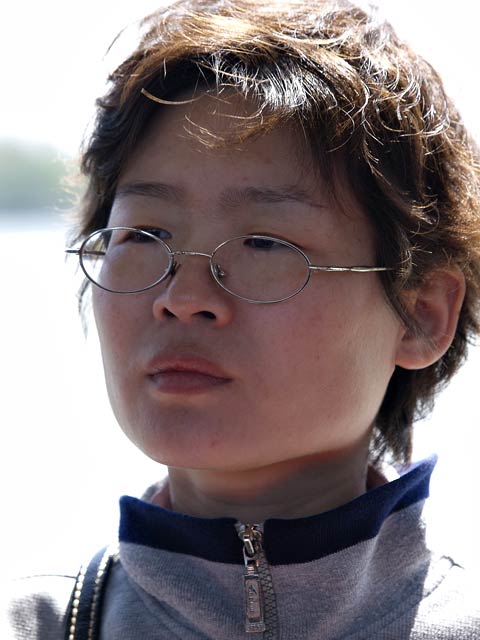 Candid moments wait for no photographer. Nor should they.   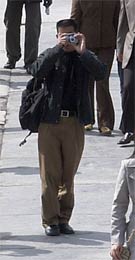 Find these people in the image below and win bragging rights.  One was easy. The other two, however... Olympus E-1 Gallery Continues -->
Reprinting except for newsworthy mention and brief quotes are by permission only. |
 Olympus E-1
Olympus E-1 The lens mount is huge compared to the image chip
size. Mirror and viewfinder physics are smaller than those on
all other dSLRs offering clearance for optics that sit further
back into the camera body. Although the E-1 is about the same
size as Nikon and Canon dSLRs, future cameras can presumably
live up to the Four Thirds system specifications in smaller,
lighter packages.
The lens mount is huge compared to the image chip
size. Mirror and viewfinder physics are smaller than those on
all other dSLRs offering clearance for optics that sit further
back into the camera body. Although the E-1 is about the same
size as Nikon and Canon dSLRs, future cameras can presumably
live up to the Four Thirds system specifications in smaller,
lighter packages. The Four Thirds sensor is 5.1 Megabytes in a
The Four Thirds sensor is 5.1 Megabytes in a 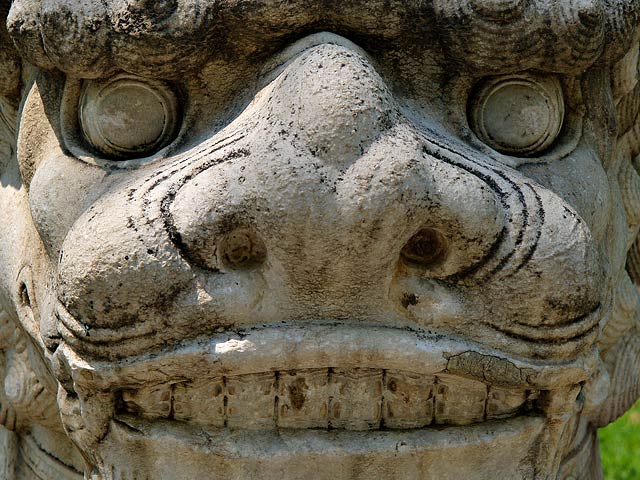

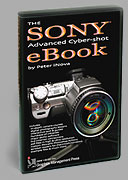
 Get
the eBooks
Get
the eBooks